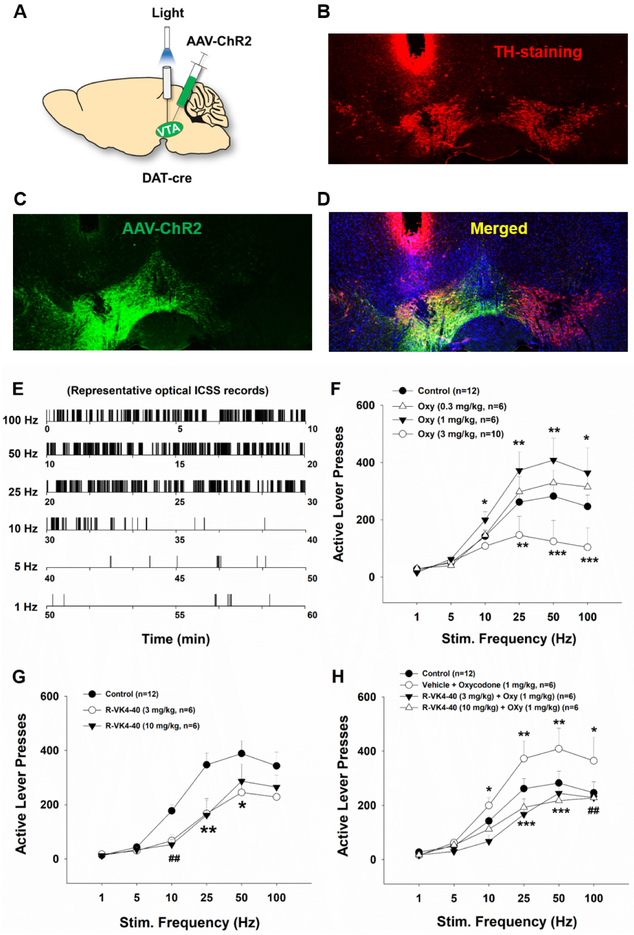Figure 6.
Effects of R-VK4-40 and/or oxycodone on optical brain-stimulation reward in DAT-Cre mice. A: Schematic diagrams illustrating the target brain region (VTA) of the AAV-DIO-ChR2-EGFP microinjections and intracranial optical fiber implantation (left). B, C, D: Representative images of TH-immunostaining (red) and fluorescent ChR2-EGFP expression (green) in the VTA. E: Representative rate-frequency curve under baseline conditions. F: Systemic administration of oxycodone produced dose-dependent biphasic effects – lower doses upward-shifted, while higher doses downward-shifted stimulation-response curves. G: Systemic administration of R-VK4-40 alone dose-dependently shifted the stimulation-response curve downward. H: Pretreatment with R-VK4-40 dose-dependently blocked 1 mg/kg oxycodone-enhanced optical ICSS. *p < 0.05; **p < 0.01, ***p <0.001 compared to the vehicle control group; ##p < 0.01 (10 mg/kg R-VK4-40), compared to control groups.

